-
1 of 253523 objects
Micrographia : or some physiological descriptions of minute bodies made by magnifying glasses with observations and inquiries thereupon 1665
30.3 x 20.6 x 3.2 cm (book measurement (conservation)) | RCIN 1090263
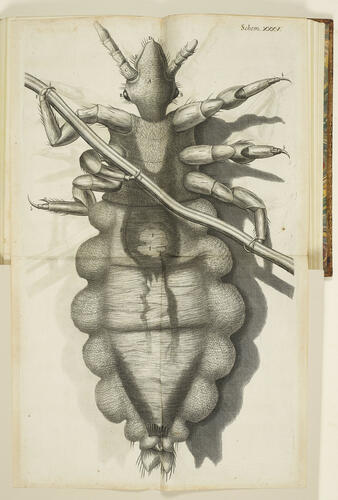
Robert Hooke (1635-1703)
Micrographia, or, Some physiological descriptions of minute bodies made by magnifying glasses : with observations and inquiries thereupon / by R. Hooke . . 1665
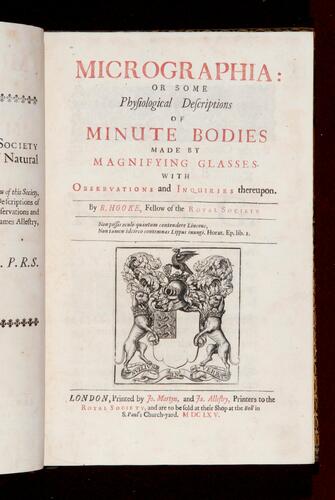
Robert Hooke (1635-1703)
Micrographia, or, Some physiological descriptions of minute bodies made by magnifying glasses : with observations and inquiries thereupon / by R. Hooke . . 1665
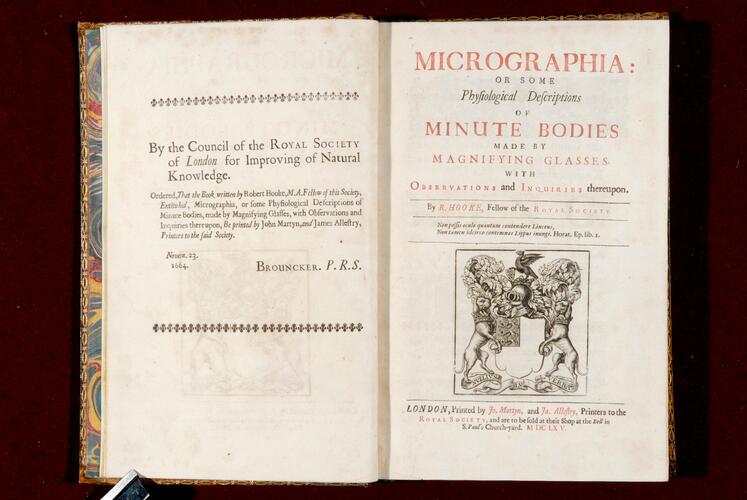
Robert Hooke (1635-1703)
Micrographia, or, Some physiological descriptions of minute bodies made by magnifying glasses : with observations and inquiries thereupon / by R. Hooke . . 1665
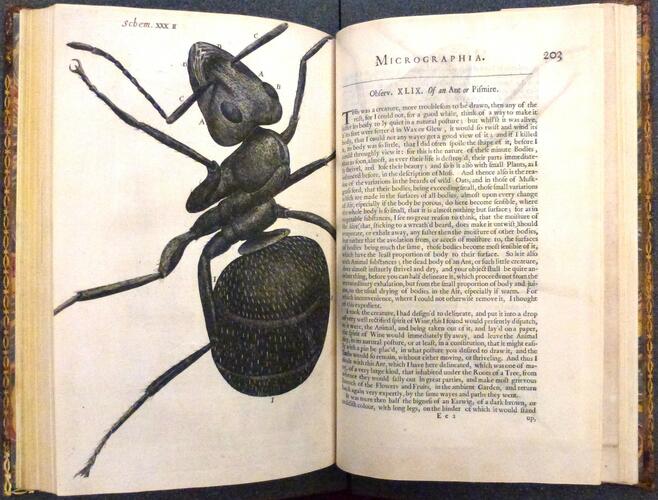
Robert Hooke (1635-1703)
Micrographia, or, Some physiological descriptions of minute bodies made by magnifying glasses : with observations and inquiries thereupon / by R. Hooke . . 1665




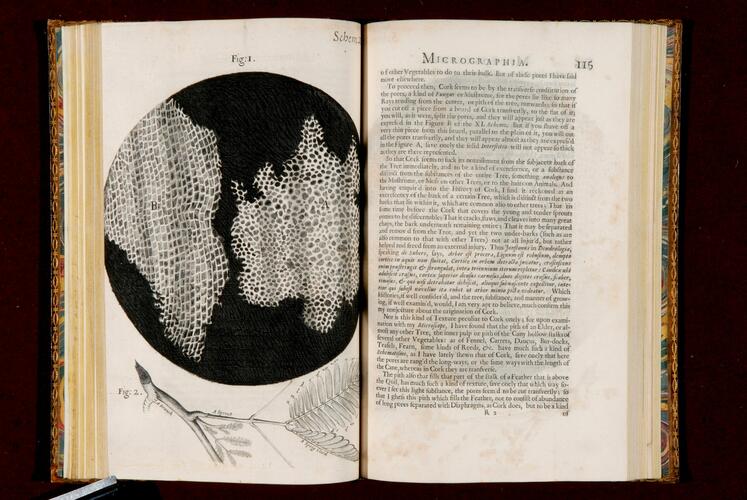
-
Robert Hooke was Curator of Experiments at the Royal Society from 1662, and as such provided a range of demonstrations for each meeting. It was to him that the task of delineating 'by the help of the Microscope the Figures of all the Insects, and small living Creatures you can light upon' was passed, after Christopher Wren begged to be relieved of the King’s request that he do it. Indeed, Hooke writes in his preface to the book that resulted, the Micrographia, that Wren's original drafts of microscopic observations were collected in the King's Closet, and they are listed in a catalogue of James II's pictures. The Micrographia features 38 engravings made from Hooke's drawings (he was briefly apprenticed to the painter Peter Lely), showing aspects of objects and creatures which had hitherto been invisible: intricate details of fleas, spiders, moss, the teeth of a snail and the cells of plants; a louse clutching a strand of human hair, illustrated here; and more unusual items such as 'gravel' in Hooke’s own urine.
Hooke tried several different methods in order to record each of the miniscule creatures he observed under the microscope. Rather than killing them, or suspending them in wax (as he attempted to do with an ant), Hooke sedated each animal with a drop of brandy. The alcohol served to incapacitate them for several hours, allowing Hooke plenty of time to make his drawings, after which they would awaken apparently unaffected.Micrographia was an immediate bestseller on its publication in 1665. The diarist, Samuel Pepys described how he stayed up reading his copy of Micrographia until two in the morning, calling it 'the most ingenious book that I ever read in my life'. Hooke's text is indeed compelling: he recorded his experience of investigating the louse in great detail, noting that the 'saucy' and 'impudent' insect is ideally adapted for walking on scalps and climbing hair, and describing how he watched as it sucked blood from his hand, feeling no pain but seeing the blood make its way through the louse's body 'very quick and freely'. 'The Creature was so greedy', he writes, 'that though it could not contain more, yet it continued sucking as fast as ever' (pp. 211-13).
Hooke dedicated his book to its instigator, Charles II, who kept a copy in his private library at Whitehall; this copy is now in the British Library. The Royal Library's copy is from the library of George III.
Provenance
Probably the copy listed in the inventory of George III’s library at Richmond Lodge, prior to its dispersal c. 1766. In the library of George III at Windsor by 1780.
-
Creator(s)
-
Measurements
30.3 x 20.6 x 3.2 cm (book measurement (conservation))
30.5 x 3.0 cm (book measurement (inventory))
Alternative title(s)
Micrographia, or, Some physiological descriptions of minute bodies made by magnifying glasses : with observations and inquiries thereupon / by R. Hooke ...
Place of Production
London [Greater London]